To change something, build a new model that makes the existing one obsolete.
— Buckminster Fuller
Before these six acres were left to the trees, before the buildings were razed and the families displaced, before the $31 million promise or the thousands of visitors, and before there was ever a blueprint for a campus that might light a path towards the school of the future — there was the young woman on the bike with the 600-page plan under her arms, the one whose childhood teachers labeled her defiant, the one who set out alone to discover the world while still a teenager, who refused to take no for an answer, and who looked out at these abandoned lots and neglected tapestry and saw the culmination of everything those 600 pages had outlined.
For Sarah Elizabeth Ippel, it was an idea that had first taken hold of her as a child, and would not let go until she found a way to make it manifest in the world: Humans re-learning to live in harmony with nature — and schools as the vital containers in which that re-education could begin.
Before her twenty-fifth birthday, Ippel had already traveled to six continents to speak with educators, sit in classrooms, and look for patterns that might reveal the most irreducible elements of a transformative education — the design principles of a living, thriving school.
As a girl, she had always felt like she was hiding in plain sight. What she experienced as curiosity, her teachers saw as misbehavior. And what she felt as frustration, the adults in her life described as the price of the ticket.
You need to play the game, they instructed, to become a player in the game. Sit and get, so that one day you can stand and deliver.
But those rules never made sense to Ippel — or to the millions of others like her, whose natural iconoclasm, or wanderlust, or mischief, or undiagnosed trauma, or all of the above made it all but impossible to abide by The Game’s overarching rule: conformity.
In her travels, however, Ippel found a willing audience for her marked intensity and drive — and a more useful set of models for her musings about the best way to reimagine the timeworn thing we have always called “school.”
What she learned spilled across the pages of her ambitious proposal to the Chicago Board of Education. The Academy for Global Citizenship (AGC), she promised, would provide a new public educational model for the 21st century — one that prepared all students for an increasingly uncertain, interdependent, and ecologically fragile world. AGC’s curriculum would foster a schoolwide commitment to holistic wellness and sustainability that expanded from the inside out — developing healthier humans, communities, and ecosystems. And it would do all of this with the children whose well-being was usually the last to be addressed.
Twice, the city said no. The approach was “too sophisticated” for the community she wanted to serve. Topics like global citizenship and the environment would have to wait until basic literacy and numeracy improved. Recess was a luxury. Healthy food was a nice-to-have. Nature was a distraction.
Not true, Ippel insisted. Empowering students to make positive change would provide them with the motivation for academic growth. Before students could become stewards of the earth, they must first fall in love with nature.
In short, there were no shortcuts.
In 2008, on the third try, AGC’s application was finally approved, and Ippel and her colleagues got their chance.
They spent their first year in the ground floor of a former dental tool factory that had been turned into a church. Founding teacher Meredith McNamara recalled needing to keep students quiet during funerals, and struggling to choreograph the daily, sometimes oppositional dance between theory and practice. “We discovered during that first year there are the ideas you have about how a learning experience should unfold,” she explained, “and then there are the realities and interests and needs of the kids in front of you, which, in the end, is all that matters. Whatever sparks their natural curiosity, that’s what you should do.”
In time, the school found its distinctive intellectual rhythm — six in-depth academic units a year, three curricular themes (responsibility for oneself, for one’s community and for the Earth) frequent field trips and speakers, and an integrated exploration of health and wellness. “As we evolved,” McNamara explained, “we realized we needed more structure for everything from community governance (i.e., becoming more democratic) to teacher collaboration (i.e., reserving two planning days at the start of each six-week cycle). We also realized just how confining the larger system of the city is, and how limiting it is to imagine our model, which depends on a certain type of physical space, in a place that’s not our own. It’s hard to teach kids to fall in love with nature if they’re never in it.”
Indeed, despite all its successes, AGC is still housed in two rented buildings, one of which is a former barrel factory, in the industrial landscape of the Garfield Ridge neighborhood on Chicago’s Southwest Side. The campuses are separated by Cicero Avenue — a frequent thoroughfare for long-distance truckers — so the businesses that surround the schools are a mixture of automotive shops, fast-food restaurants, and motels. It’s a gray, flat section of the city, with scores of undeveloped lots alongside nearby residential streets and rows of well-manicured, single-story houses.
More than 90 percent of AGC’s student body come from these nearby streets and houses. Two-thirds of them are low income. Three out of ten are learning English for the first time. And one out of four have special learning requirements.
To support the needs of these children, Ippel and her colleagues have done everything they can to create a greener landscape. An asphalt parking lot now features raised garden beds, a greenhouse, and some schoolyard chickens. The students grow their own vegetables, and eat what they grow thanks to an on-site chef working in a zero-waste organic cafeteria. Classrooms are lit by on-site solar panels; a wind turbine anchors the outdoor playground; rainwater gets collected from the greenhouse gutters.
And yet.
“When we started AGC,” Ippel told me, “we always knew we needed a future home of our own design — an environment that fully reflected the vision of what we are trying to achieve here. To build a thriving world, we must design the template of a living school, and create a prototype so that others can do the same.”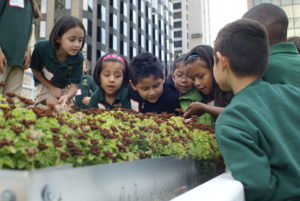
And so, while her colleagues went on with the critical daily work of teaching and learning, Ippel went on the hunt for funding, and for a team of visionary designers from across the globe.
The team came first, and their work has engendered what critic Alexandra Lange describes as “the most architecturally ambitious design I’ve seen in the U.S.” In a section of the city in which healthy food options are scarce, more than half of the six-acre site will be reserved for neighborhood gardens, orchards, food forests, hoop houses, greenhouses, teaching kitchens and a community farm café and store. Instead of traditional classrooms, the school will be organized into Neighborhoods that get shared by grade-level bands. Each building will have a sloped roof, tilted toward the sun and covered with photovoltaic panels. On the shady sides, a clerestory window will let in cool northern light. Gutters running along the low points in the roof will collect stormwater for toilets and gardens. Students will move throughout the day along a series of meandering outdoor paths. And the campus will abide by the world’s most robust sustainability performance standards.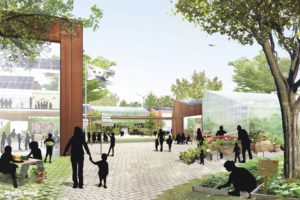
“It’s a flipped relationship with circulation space,” Ippel says. “Rather than breaking learning spaces up with hallways and walls and asking each educator to stay in one space with one group of students, teachers will circulate around the entire shared learning space throughout the day. The campus itself will be a living system — with geothermal wells, animals, a learning barn, and ample green space. We’re adding trees to improve outdoor air and remove air pollutants. We’re giving preference to building products and materials that are recycled, salvaged, rapidly renewable, or sustainably harvested. And we’re doing all of this using the same cost per square foot as the district, so that the ideas and design principles are accessible to anyone who hopes to replicate this approach in their own communities.
“Why would we all not do this? Why would we not make this the new standard?”
Good question. And in 2019, Ippel finally got some answers when, after seeing the school’s sustainable design and its possibilities for replication, Illinois Governor J.B. Pritzker authorized $31 million of state funds to support the school’s construction.
Making the decision easier for the Governor, Ippel had already found the land on which AGC’s vision could eventually become a reality — a site that runs alongside the Stevenson Expressway, a few blocks from AGC’s current campuses, and about a mile from Midway Airport. It’s a patchwork of large tracts of overgrown grass, comprising more than forty acres in total, broken up by a cross of empty roadways, and currently housing little more than a well-spaced community of sturdy Oak trees.
Its barrenness, in the shadow of the Chicago skyline, makes one wonder why it is barren, and what or who was here before. And, as you might suspect, the story of this land is a reminder of just how many other forces are always at play in our cities and communities, and just how far we still have to travel as a people.
That’s because AGC’s future home was also once the home of LeClaire Courts, a public housing complex of 600 two-story row houses that stretched along Cicero Avenue. Built in 1950, Leclaire Courts was an early attempt at integrated, low-rise public housing. And over the years, it became the home of thousands of African-American children and families.
That all changed in 1999, when Chicago Mayor Richard Daley announced what he called “The Plan for Transformation.” It was a plan to demolish every remaining public housing complex in the city — more than 18,000 units. It would take ten years, the Mayor said, at a cost of $1.6 billion. It would ostensibly result in a slew of transformational public-private developments, and a bevy of new and improved public housing options. And it would guarantee most of the families that were going to be displaced a “right of return” once the old buildings were demolished and the new units were built.
In 2011, the Courts were torn down, and its families were displaced. The site has been barren ever since. And now, nearly ten years later, according to the Chicago Reader’s Lucia Anaya, “the list of LeClaire residents with a right to return has dwindled from 400 families to fewer than 40. Some no longer qualify for return or have died. Others have simply lost hope of ever returning and have made their temporary homes permanent.”
As a result, Garfield Ridge’s Black families, once the majority in the neighborhood, are now being joined in increasing numbers by Latino children and families. “Daley didn’t believe public housing developments could ever be assets to the neighborhoods around them,” writes Chicago native Ben Austen. His belief was that “the very landscape would be remade, the skyline altered, the street grid restored.” Anything less, the Mayor proclaimed, and “you wouldn’t have a city of the future. You’d have a city of the past.”
But timing is everything, and the Plan was devised amid the real estate bubble of 2008. As money dried up overnight, Austen explained, “the poured foundation set exposed like a Roman ruin, harking back to an age that had yet to be.”
For residents like Tara Stamps, a CPS teacher who had grown up in one of the houses the city had destroyed, the feeling of displacement left a permanent scar. “Those were not just buildings,” she said. “Those were families. Those were communities.” The people who lived there “are rooted to the land. They have a blood memory there. Their grandparents and their aunts and their cousins and their favorite memories were there.”
So the story of this place does not begin with the young woman on the bike after all, just as our own stories do not begin with us. Instead, like all stories, they are a kaleidoscope of things and memories and people, equal parts beauty and tragedy, injustice and fairness — the dialectical legacy of homo sapiens, sunk into the soil of our shared landscapes.
Wherever we are, in other words, old bones are buried, stubborn legacies persist, and new life is bound to emerge.
How willing are we to find the roots of the stories that shape us?
By her own admission, Berenice Salas wasn’t willing at all. She grew up in this neighborhood — the daughter of educators — and the only things she was certain of as a young woman were that she wanted to leave, and she didn’t want to teach.
Once she moved away, however, she felt the land of her family pulling her back. And when she heard what they were doing in a former barrel factory near her childhood home, she allowed herself to be pulled all the way in.
Now, as AGC’s elementary school principal, Salas sees her work as a part of something larger than herself. “This is the school I would have dreamt of growing up,” she told me. “We are creating our own little ecosystem — right next to the highway. The Southwest side has always been unfairly under-resourced. But we can be the anchor of something that is both very new and very old. My dad was a farmer in Mexico. This work makes me feel like I’m going back to my roots, and reestablishing what was lost. I’m continuing the work of my ancestors, but in a different way.”
For too long, this is the work that too many of us have tried to forget.
For generations, we have practiced the logic of delusion, and the slow dance of collective suicide.
And now we must remember — before it’s too late.
“Our school lies at the crossroads of a great city,” Ippel says, “bounded by racial divisions and economic challenges. But our citizens are the seeds that will give birth to new gardens here, and new chapters of hope across the globe. Together, we can all be the seeds that inspire people everywhere to reimagine the structure and purpose of school.”
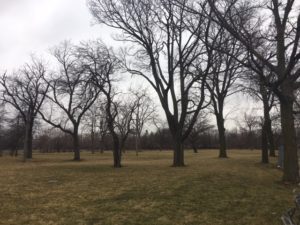
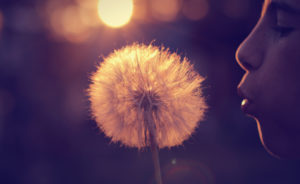
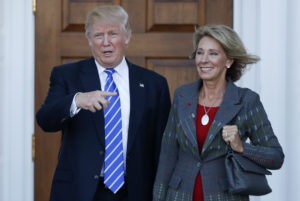
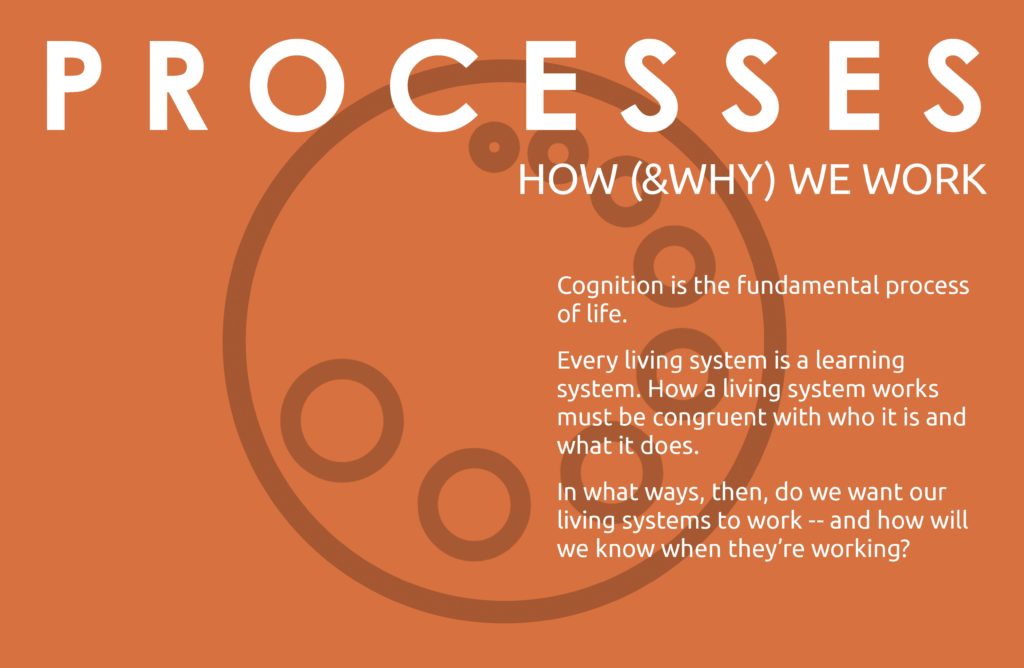
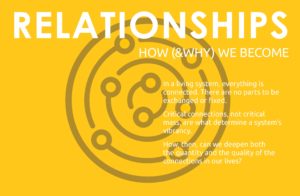
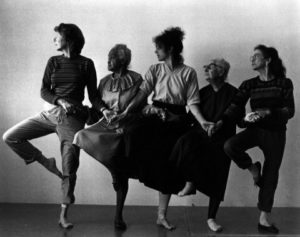
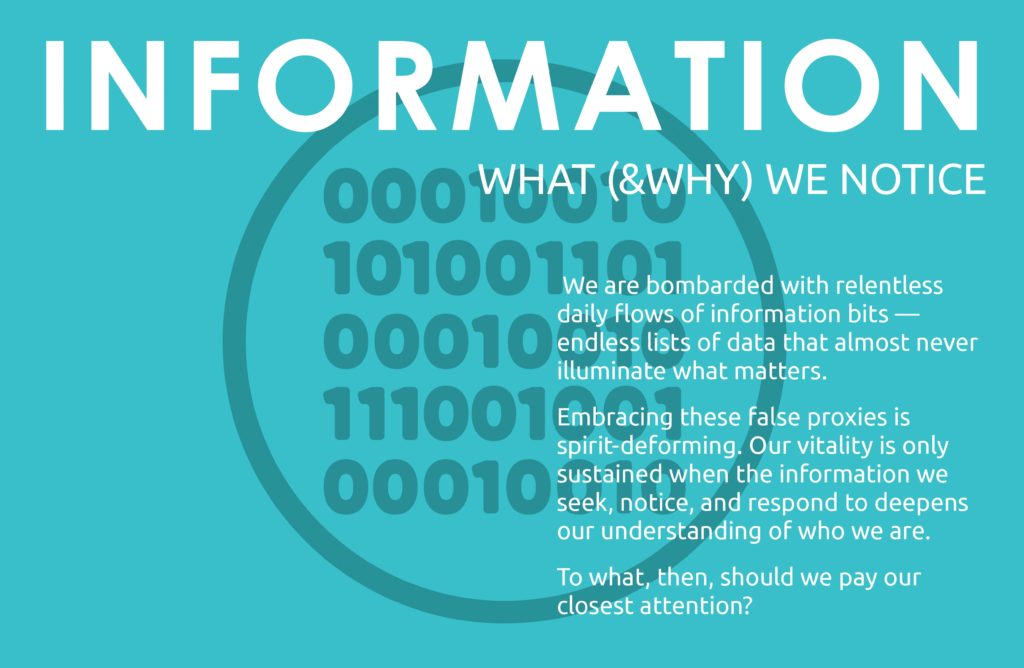
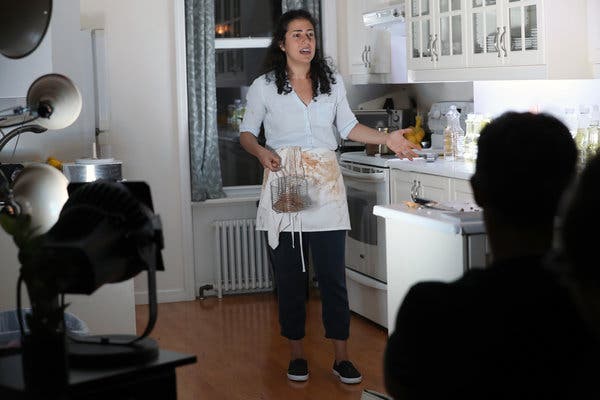 The setting is simple and straight-forward: a woman of mixed Syrian-German parentage recalls her encounter with Ashraf, a Syrian man in Paris who charms her and then disappears, prompting the woman to set out in search of him — a journey that leads her to intersect with some of the millions of Syrian refugees in Lebanon and Jordan.
The setting is simple and straight-forward: a woman of mixed Syrian-German parentage recalls her encounter with Ashraf, a Syrian man in Paris who charms her and then disappears, prompting the woman to set out in search of him — a journey that leads her to intersect with some of the millions of Syrian refugees in Lebanon and Jordan. 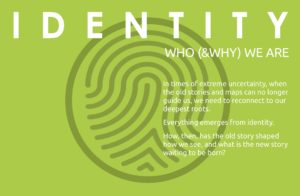
Recent Comments